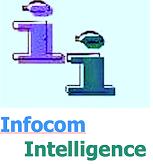Strategy-making for infocom industries
By: Louis Rhéaume
Innovation management has become a key challenge for organizations in many industries. More and more patents are registered around the world, corporate and governmental R&D expenditures have increase massively, and technology acquisitions are improving on an historical basis. Innovation is know seen as a question of corporate survival and international competitiveness. While most innovation fails, companies that don’t innovate in the long term die (Chesbrough, 2003).The importance of crafting a sound and coherent innovation strategy appears crucial in many industries, even more in turbulent environments where clear guidelines help managers allocate R&D resources internally or acquire technologies outside the firm. Chesbrough (2003) argues that many industries should adopt an " open innovation " strategy (ex. PCs, movies, telecommunications). In this paradigm, companies don’t think that all the best minds work in their own organization and that R&D in their laboratory will bring the most attractive innovation portfolio projects to market. They think that external ideas must be integrated in their organization (ex. through start-ups acquisitions, acquisition knowledge form universities projects, research joint venture, internal corporate venture capital) and that an innovation worth nothing if there is no business model which support this innovation. Examples of this shift of paradigm are the new innovation policy at Procter & Gamble: 50% of its innovation must be sourced outside the company in five years (was at 10% in 2002) and the intellectual property management at IBM.
Any patent which can not be turned into an innovation that is sustained by a business model at IBM can be sold in a license externally. This very successful policy helps IBM leverage all the patents not developed internally (IBM is the world leader in the number of new patents each year). Thus, IBM got $1.9 billion in royalty payments from such licenses for 2001 alone.
Rigidity and structure versus flexibility and learning
Strategic planning that co-exist with autonomous actions -where managers are authorized to make decisions without top management approval - has positive performance effects in dynamic and complex industries (Andersen, 2000). While Microsoft has a coherent global strategy of getting a foothold in all significant and emergent operating system market, which offer Internet access (ie. PC, video games, cellphones, PDA), low and middle level managers are also strongly encourages to bring their creativity and input in the strategic actions of their respective, and very different division. One tool which can stimulates individual and organizational learning is the strategic developement corporate universities, which obtained a recent popularity (Rhéaume and Viola, 2004). We will see in a future Infocom Analysis comment how it can be strategic.
Innovation strategies
For Hamel and Prahalad, strategy is more than the allocation of scarce resources across competing projects; it is the quest to overcome resource constraints through a creative and unending pursuit of better resource leverage with the corporation conceived as a portfolio of competencies as well as a portfolio of businesses, and innovation projects.Research suggests that in over 90% of all successful businesses, historically, the strategy that the founders had deliberately decided to pursue was not the strategy that ultimately led to the business’s success (Christensen and Raynor, 2003).According to an executive advisor of NEC: " the company will focus on recruiting and educating the right people. They will be innovative employees capable of insights into the future and their own strategic vision. The right management climate must exist to enable them to thrive. " (Suzuki, 2000). NEC’s human resources management is highly strategic.

A blog on the convergence of info-communications industries: communications, computing, electronics, entertainment, publications and education. Strategic, technological and financial analysis. English and French blog. Cette chronique traite de l’évolution des industries de l’information et des communications et couvre des aspects stratégiques, technologiques et financiers, comme l’économie du savoir et de l’innovation. L’auteur est Associé principal de Infocom Intelligence.
Labels
finance
(58)
strategy
(39)
innovation
(36)
technology
(29)
Internet
(25)
mobile internet
(25)
stratégie
(21)
applications
(20)
business models
(19)
mobile technologies
(17)
venture capital
(17)
Apple
(13)
télécommunications
(13)
consumer internet
(12)
media
(12)
telecommunications
(12)
mergers and acquisitions
(11)
video games
(11)
wireless
(11)
technologie
(10)
Android
(9)
technologies de l'information et des communications
(9)
téléphones intelligents
(5)
No comments:
Post a Comment